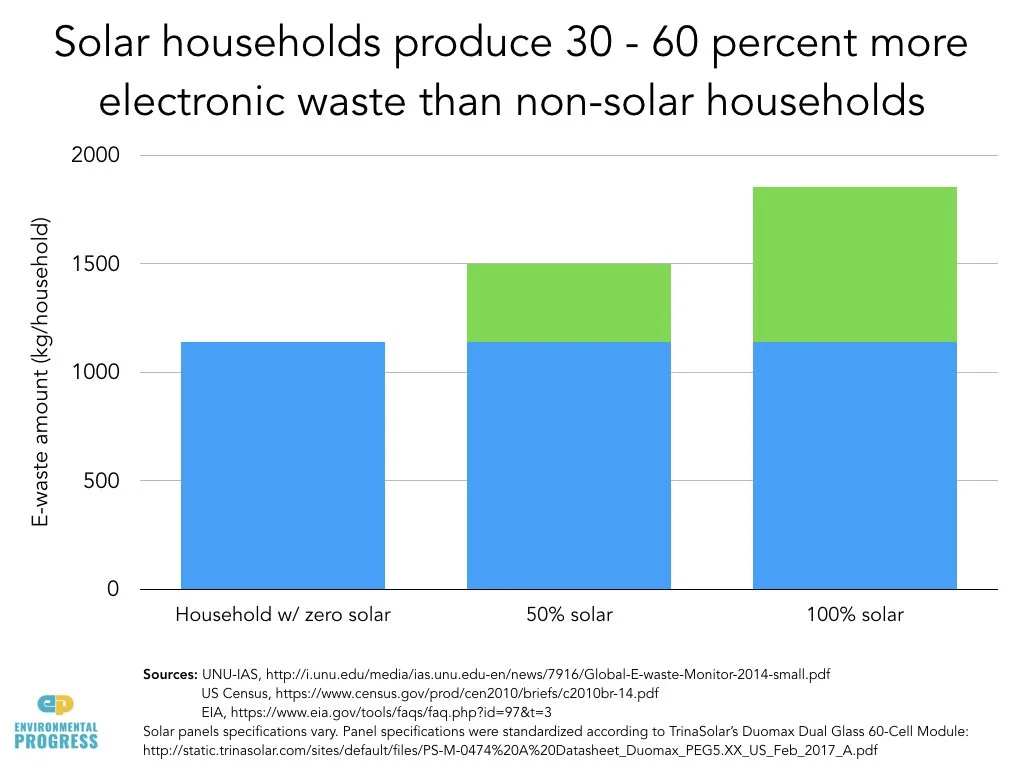New study finds solar households produce 30% to 60% more electronic waste than non-solar households
June 27, 2017
by Jemin Desai and Mark Nelson
Over the last decade, millions of Americans have put solar panels on their roofs in an effort to reduce their environmental impact.
But a new study finds that households with solar roofs will produce 30 to 60 percent more electronic waste (e-waste) than households without solar roofs.
The new study comes on the heels of another EP study that found that solar produces 300 times more toxic waste than nuclear plants per unit of energy.
Solar panels become e-waste when they are retired after 20 years, and only the European Union requires the solar industry to take responsibility for its waste.
The average American household produces 1,140 kg of electronic waste over 20 years as compared to solar households which produce between 1,500 kg to 1,900 kg over 20 years, depending on the size of their solar system.
E-waste production has been steadily rising, but to avoid making forecasts, the study holds constants the generation of non-solar e-waste at 2014 levels, the latest year data is available.
The lower-bound estimate for solar e-waste production is based on a rooftop home solar system providing 50 percent of average annual American residential electricity consumption, while the upper-bound estimate is based on a solar system providing 100 percent.
Methodological notes:
Annual American per capita e-waste production is assumed to be constant at 2014 levels over 20 years
The analysis calculates e-waste per household using US 2010 Census data on household size.
EIA 2015 data for American residential electricity consumption is assumed to remain constant over 20 years.
Assumed 15% capacity factor for rooftop PV

